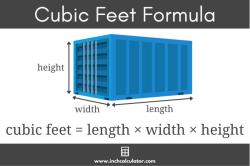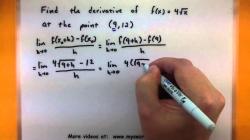How to find instantaneous velocity calculator?
To calculate instantaneous velocity, you need to know the change in position (displacement) over a very small time interval. The formula for calculating instantaneous velocity is:
Instantaneous Velocity = Change in Position / Change in Time
Here's a step-by-step guide on how to find instantaneous velocity:
Determine the Initial and Final Positions: You need to know the initial position (where the object started) and the final position (where it ended up). These positions are typically given in terms of distance or displacement.
Record the Initial Time: Note the time at which the object started moving or at the beginning of the time interval for which you want to calculate the instantaneous velocity.
Record the Final Time: Note the time at which the object stopped moving or at the end of the time interval.
Calculate the Change in Position: Subtract the initial position from the final position to find the change in position (displacement). The change in position is typically represented by the symbol Δx (delta x).
Δx = Final Position - Initial Position
Calculate the Change in Time: Subtract the initial time from the final time to find the change in time. The change in time is typically represented by the symbol Δt (delta t).
Δt = Final Time - Initial Time
Calculate the Instantaneous Velocity: Divide the change in position (Δx) by the change in time (Δt) to find the instantaneous velocity. The result will be in units of distance per unit of time (e.g., meters per second, miles per hour).
Instantaneous Velocity = Δx / Δt
This calculation gives you the velocity of the object at a specific moment in time or over a very short time interval. It represents how fast and in which direction the object is moving at that instant.
Note: To obtain a more accurate value for instantaneous velocity, you should use smaller and smaller time intervals (approaching zero) to get closer to the true instantaneous velocity at a particular moment. In calculus, this concept is approached using limits and derivatives.
Instantaneous Velocity Calculator: Tools and Methods for Determining Speed
Instantaneous velocity is the rate of change of an object's position at a given moment in time. It is a vector quantity, meaning that it has both magnitude and direction. The magnitude of instantaneous velocity is the object's speed, and the direction of instantaneous velocity is the direction of the object's motion.
There are a variety of tools and methods that can be used to determine instantaneous velocity. One common method is to use a calculus equation:
v(t) = lim (Δt → 0) Δx(t) / Δt
where:
- v(t) is the instantaneous velocity at time t
- Δx(t) is the change in position over a small time interval Δt
This equation can be used to calculate instantaneous velocity for any type of motion, including linear motion, circular motion, and projectile motion.
Another common method for determining instantaneous velocity is to use a graphical representation of the object's motion. For example, if you have a graph of the object's position versus time, you can calculate instantaneous velocity by finding the slope of the tangent line to the graph at the point of interest.
Speed in an Instant: Calculating Instantaneous Velocity with Precision
The precision of an instantaneous velocity calculation depends on the accuracy of the data used in the calculation. For example, if you are using a calculus equation to calculate instantaneous velocity, the precision of the calculation will depend on the accuracy of the position data and the time interval Δt.
If you are using a graphical representation of the object's motion to calculate instantaneous velocity, the precision of the calculation will depend on the accuracy of the graph and the ability to accurately measure the slope of the tangent line.
On the Move: Using Calculators for Instantaneous Velocity Calculations
There are a variety of calculators available that can be used to calculate instantaneous velocity. These calculators typically require you to input the object's position data and the time interval Δt. The calculator will then use the calculus equation above to calculate the instantaneous velocity.
Instantaneous velocity calculators can be a useful tool for students and scientists who need to calculate instantaneous velocity for their work or studies. However, it is important to note that the precision of the calculation will depend on the accuracy of the data used in the calculation.
Here are some tips for using instantaneous velocity calculators:
- Use accurate data. The precision of the calculation will depend on the accuracy of the data used in the calculation.
- Be careful with the time interval Δt. The time interval Δt should be as small as possible to get the most accurate calculation of instantaneous velocity.
- Use a calculator that is appropriate for your needs. There are a variety of instantaneous velocity calculators available, so it is important to choose one that is appropriate for your needs.
If you are unsure about how to use an instantaneous velocity calculator, you should consult the calculator's documentation.












